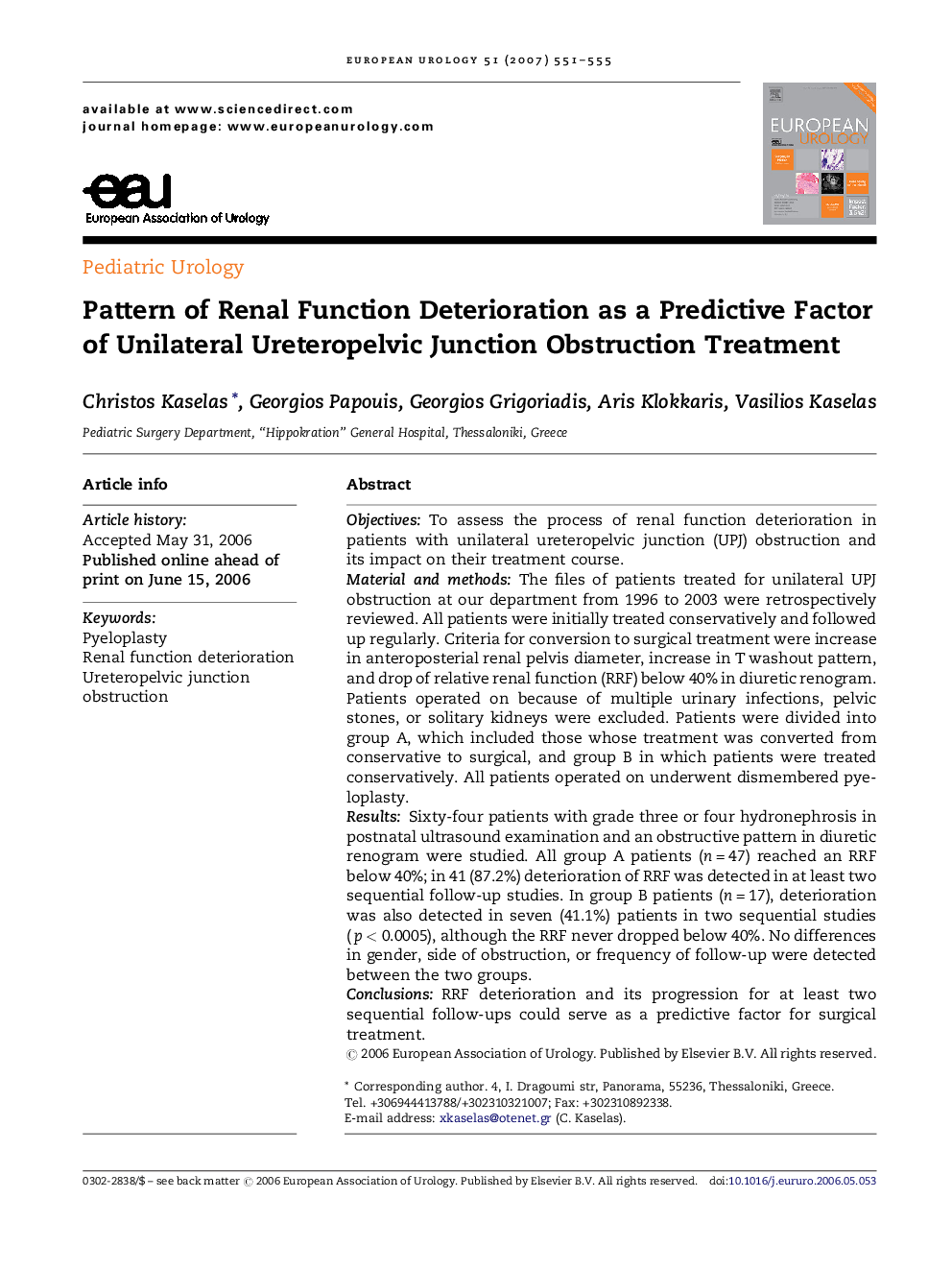| Article ID | Journal | Published Year | Pages | File Type |
|---|---|---|---|---|
| 3928925 | European Urology | 2007 | 5 Pages |
ObjectivesTo assess the process of renal function deterioration in patients with unilateral ureteropelvic junction (UPJ) obstruction and its impact on their treatment course.Material and methodsThe files of patients treated for unilateral UPJ obstruction at our department from 1996 to 2003 were retrospectively reviewed. All patients were initially treated conservatively and followed up regularly. Criteria for conversion to surgical treatment were increase in anteroposterial renal pelvis diameter, increase in T½ washout pattern, and drop of relative renal function (RRF) below 40% in diuretic renogram. Patients operated on because of multiple urinary infections, pelvic stones, or solitary kidneys were excluded. Patients were divided into group A, which included those whose treatment was converted from conservative to surgical, and group B in which patients were treated conservatively. All patients operated on underwent dismembered pyeloplasty.ResultsSixty-four patients with grade three or four hydronephrosis in postnatal ultrasound examination and an obstructive pattern in diuretic renogram were studied. All group A patients (n = 47) reached an RRF below 40%; in 41 (87.2%) deterioration of RRF was detected in at least two sequential follow-up studies. In group B patients (n = 17), deterioration was also detected in seven (41.1%) patients in two sequential studies (p < 0.0005), although the RRF never dropped below 40%. No differences in gender, side of obstruction, or frequency of follow-up were detected between the two groups.ConclusionsRRF deterioration and its progression for at least two sequential follow-ups could serve as a predictive factor for surgical treatment.
